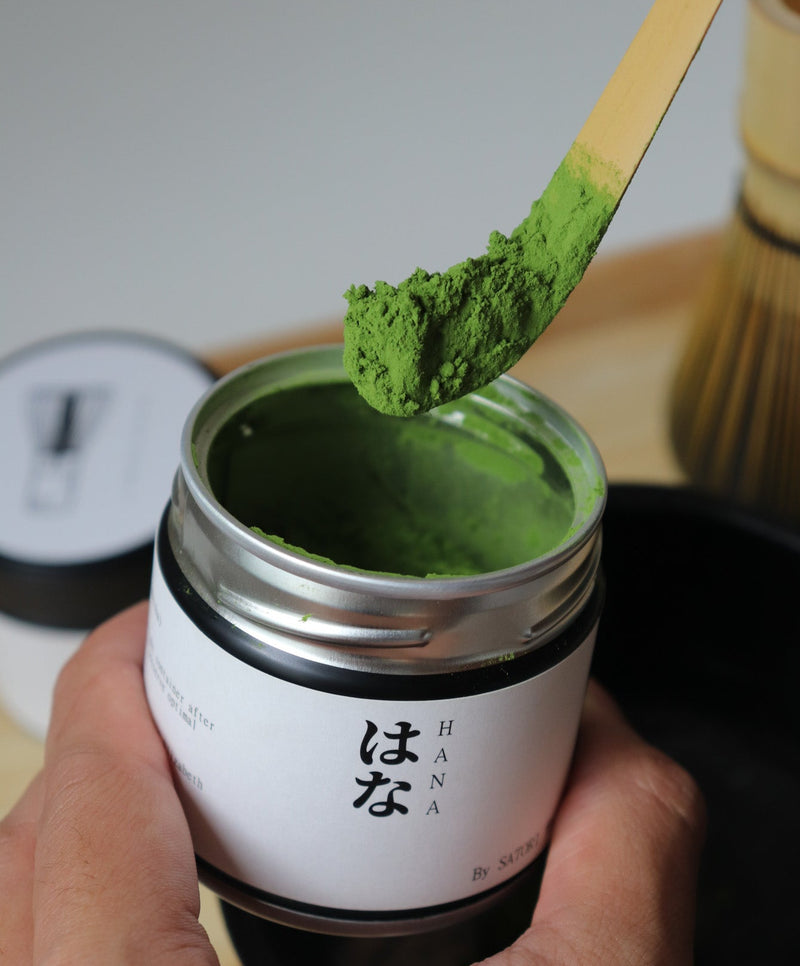A deeper look at the language of tea from Satori Tea House
Japanese tea culture is rich not only in tradition, but in the language used to describe it. Unlike the simple categories we often use in the West (bitter, sweet, creamy), Japan has developed a more refined vocabulary to capture the subtle complexities of matcha. These words don’t just describe flavor — they express mood, feeling, texture, and the overall tea experience. Here's a look at five of the most poetic and practical terms used to describe matcha, and why they matter.
1. Usacha (薄茶) — "Thin Tea"
What it means:
Usacha refers to a light-bodied, frothy matcha made with less powder and more water. It’s the standard way matcha is served in most cafés and homes.
Why it’s used:
Usacha is ideal for casual, everyday matcha drinking. It’s smooth, gentle on the palate, and usually a bit sweeter. Because of its balance and ease, it's often used to introduce beginners to matcha.
How it’s prepared:
Roughly 1–2g of matcha powder whisked with 70–100ml of hot water (about 80°C). It creates a foam on top and a light, green tea flavor that’s easy to drink.
“Usacha is approachable, comforting, and made to be part of your daily rhythm — whether it’s a calm morning ritual or a quick afternoon reset.”
2. Koicha (濃茶) — "Thick Tea"
What it means:
Koicha is matcha in its boldest form — thick, syrupy, and made with more powder and less water. The consistency is closer to melted chocolate than tea.
Why it’s used:
Traditionally reserved for Japanese tea ceremonies, koicha is made with the highest-quality, ceremonial-grade matcha. It allows the drinker to fully experience the rich, umami flavors of the tea — deep, earthy, and profound.
How it’s prepared:
About 3–4g of matcha powder whisked slowly with 30–40ml of warm water. Because of its thickness, it’s not frothed like usacha but mixed gently to a smooth consistency.
“Koicha is the heart of ceremonial matcha — rich and grounding, it’s less of a drink and more of a mindful experience.”
3. Shibumi (渋み) / Shibui (渋い) — Astringency
What it means:
Shibumi refers to the astringency or subtle dryness on the tongue, similar to what you might experience with red wine or green apples.
Why it’s used:
In matcha, a little shibumi is desirable. It provides structure and balance, preventing the tea from becoming too sweet or flat. When well-balanced, this astringency brings clarity and a clean finish.
How to recognize it:
Astringency should feel crisp, not bitter. It should lightly dry the mouth without leaving an unpleasant aftertaste. High-quality matcha will have shibumi in harmony with sweetness and umami.
“Balanced shibumi gives matcha its edge — a clean, structured finish that refreshes and resets the palate.”
4. Kokumi (コク味) — Richness, Body & Roundness
What it means:
Kokumi is a word that goes beyond taste — it describes the mouthfeel of the tea. A matcha with great kokumi feels thick, velvety, and full on the tongue.
Why it’s used:
Kokumi is what gives matcha its luxurious texture. Along with umami, it creates that smooth, lingering sensation that coats your mouth in the best way. It makes the matcha feel nourishing, not just flavorful.
How to recognize it:
Kokumi is felt more than tasted. You'll notice it as a rounded, creamy quality that makes the tea feel complete. It's especially noticeable in higher grades of matcha or in koicha preparations.
“When matcha has strong kokumi, it doesn’t just taste good — it feels good, enveloping the senses.”
5. Satori (悟り) — Moment of Awakening
What it means:
Satori is a Zen Buddhist term meaning a sudden flash of insight or enlightenment — a moment when the world seems to pause and everything becomes clear.
Why it’s used:
For us, satori is the soul of matcha. It’s that feeling you get when you’re fully present — whisking the tea slowly, watching the powder dissolve, sipping in silence. It’s the calm between the noise. The beauty of doing nothing, except being.
How we embody it:
Satori isn’t just a word — it’s a philosophy. Every element of tea preparation, from the bowl you choose to the way you whisk, can be an invitation to satori.
“Satori is the pause before the first sip — the stillness where tea becomes more than a drink, and life feels just a little more clear.”
🌿 Final Thoughts
At Satori Tea House, we’re passionate about the deeper experience of matcha. These words aren’t just poetic — they’re practical tools to help you notice more, feel more, and connect more deeply to your cup of tea. Whether you’re new to matcha or a longtime drinker, we invite you to explore these concepts in your own tea rituals.


